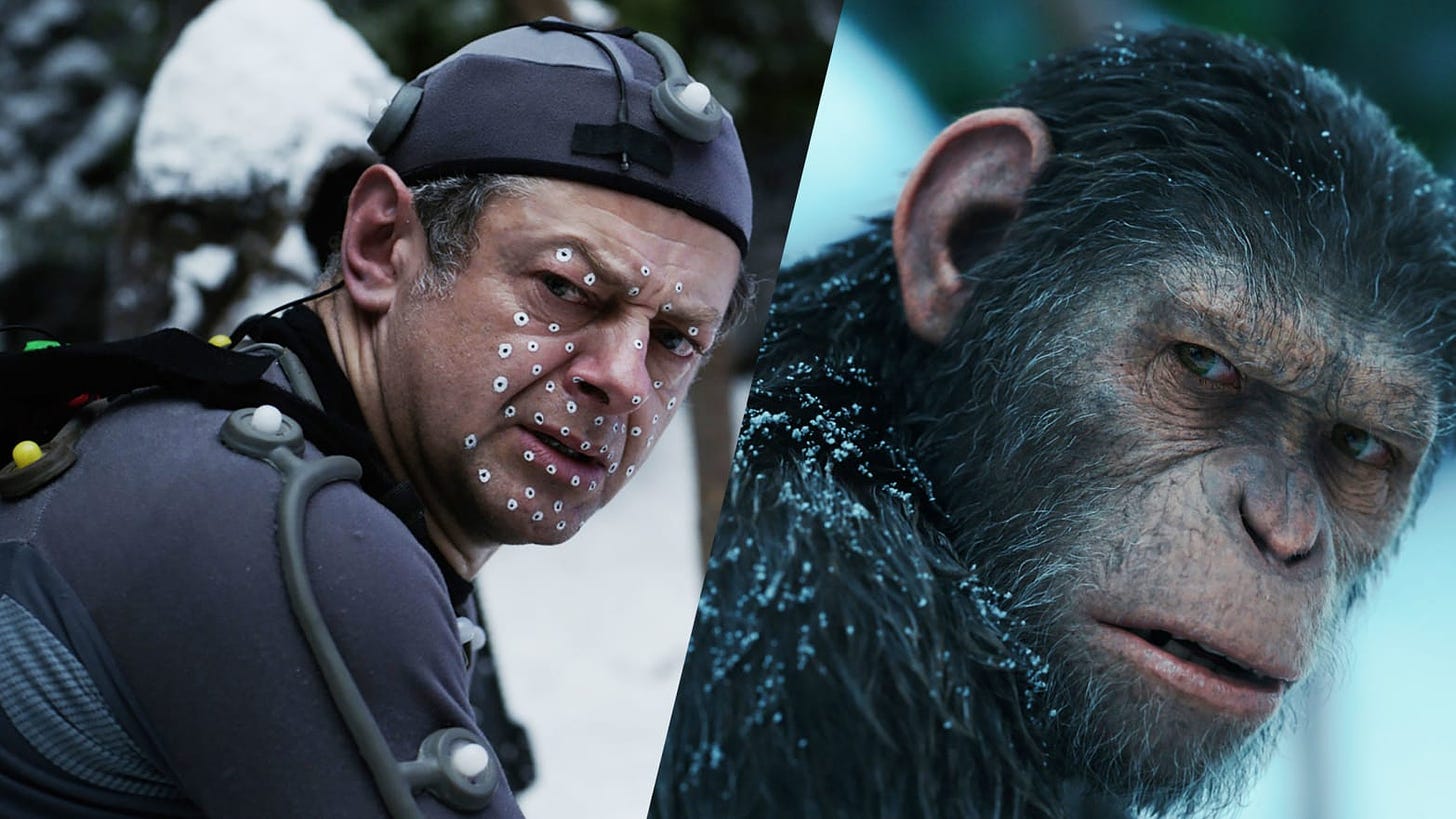Motion Capture: From 7 Dwarfs to Guardians of the Galaxy 3
Tracing the evolution of performance capture in film, spanning early rotoscoping techniques to its modern-day uses in visual effects-heavy movie franchises.
My fellow space cadets! Get ready to blast off for another epic adventure with the Guardians of the Galaxy crew! Who doesn't love a bunch of misfits with hearts of gold 💛, especially when they’re kicking butt and taking names across the galaxy 🚀? Marvel fans rejoice: the third installment of the trilogy has hit theaters, and it’s a wild ride full of heart, humor, and, of course, a killer soundtrack that’ll have you bopping along in your seat!
But have you ever wondered how some of the amazing characters in this movie (and other films) come to life? It's like magic, only cooler, and it’s called motion capture, and it has revolutionized the film industry. We’re going to peek at how motion capture (also known as mocap or performance capture) has changed the game, so fasten your seatbelt, and enjoy the ride as we travel all the way back to…
The 1970s - Animation and Virtual Worlds
We could go back even further and talk about how rotoscoping techniques (Animating frame-by-frame over the filmed movement of actors) are really the beginning of mocap. It was used in Disney’s Snow White and the Seven Dwarfs (1937) and was the first time mainstream audiences witnessed animated characters move as realistically as a person. The 1970s saw an explosion of the technique through the works of animators like Ralph Bakshi. His animated adaptation of The Lord of the Rings used the style extensively.

But the 70s is also when a computer scientist named Myron Krueger developed a virtual reality system called “Videoplace.” Sounds like a VHS rental spot 📼 from the 80s, right? But it was far more advanced than that! It allowed users to interact with computer-generated environments using their body movements. Talk about ahead of its time! This was really the basis for the kind of technology we mostly associate with motion capture today.
The 1980s and 1990s - a CGI Revolution
As motion capture technology continued to evolve, filmmakers started using it to create digital characters and special effects in ways that had never been done. Throughout the wackiness of the 80s and 90s, motion capture technology made some seriously cool strides. Picture researchers donning funky reflective markers and doing the robot dance to develop the VICON system. It was like a disco party meets science lab! Cameras were everywhere, capturing performers’ moves with the precision of a salsa dancer 💃 on roller skates. The system was used in the incredible VFX masterpiece Titanic to create dozens of small vignettes of digital characters populating the ship–all animated using performance capture through VICON. VFX Supervisor Rob Legado described his use of motion capture in the 1995 making of the film by saying:
“It’s really the way [a person] moves that makes you believe they are dramatically in that scene. Context makes these little vignettes come to life. We start to populate the ship with these people, and once they moved, you got the essence of their personality. All of a sudden, you sort of put these souls of these people that you transplanted through this process onto the deck of a ship.”
The 21st Century’s dawn of the CGI character
It wasn’t until the turn of the millennium that motion capture started being used the way we know it now. The feature film Star Wars: Episode I - The Phantom Menace used motion capture extensively in 1999, where the character Jar Jar Binks was brought to life through the technique. And honestly, love him or hate him, he was ahead of his time too!
But it was with Peter Jackson’s The Lord of the Rings trilogy that Mocap officially became a sole performer! The second film of the trilogy, The Two Towers, featured the first movie character exclusively created using performance capture technology. Gollum was not just motion captured but voiced, and therefore fully played, by the talented Andy Serkis. Gollum has become one of the most memorable and preciousssss characters in movie history, and Serkis has become a legend of performance capture.
His other great work in the field was as the intelligent ape Caesar in the newest reboot of the Planet of the Apes franchise. He and a cast of other actors wore motion capture suits and prosthetics to portray the apes, and their nuanced performances were realistic and emotionally charged. The technology also allowed for realistic ape movements and facial expressions, adding to the films' striking realism.
Mocap today
But let's get back to the Guardians of the Galaxy crew, shall we? The films have been pushing the boundaries of performance capture since the first film in 2014. The filmmakers even included a 1970s-style homage to rotoscoping in the recent Guardians of the Galaxy Holiday Special with animated scenes in the style of Ralph Bakshi.

But most notably, motion capture has been used in all of its films and offshoots to bring the smallest Guardian to life, Rocket Raccoon. Like Gollum and Caesar, Rocket was entirely computer-generated. Bradley Cooper provided the voice, while Sean Gunn (who also plays Kraglin, the Ravager) provided the motion capture movements and facial expressions. Thanks to the technology, the filmmakers could create an array of fantastic digital creatures for the film that looked and moved like real beings.
Guardians of the Galaxy Vol. 3 is no exception. In fact, this film focuses primarily on Rocket’s story and dives deep into his past. We learn about his origins as a testing animal in captivity, and we meet several old animal friends on the same path to genetic upgrade. These animals–a bunny, a walrus, and an otter–were motion captured as well by actors Mikaela Hoover, Asim Chaudhry, and Linda Cardellini. The film follows the four through flashbacks during their time in a cruel laboratory where their friendships ❤️ and dreams of freedom were their only solace. The scenes include some of the most emotionally grounded performances by motion capture artists to date and mark a huge milestone in the art form.
The Future of Motion Capture
Motion capture is even breaking into the virtual reality scene, where developers use it to create immersive and interactive environments that respond to users’ movements and actions using haptic suits that respond to movement and even provide feedback to the wearer.
But some of the newest forms of mocap don’t even require suits. Instead, they employ phone cameras 📱, AR, and AI to interpret the filmed movement of an actor. Some even remove the motion subject from the shot entirely to make room for the digital counterpart.
In some cases, removal isn’t even necessary as the AI can simply augment features of the actor to look however it needs.

And even more advanced future forms would include AI tools that capture the movements of an actor simply as a training model to base a new computer-generated version that is dynamically adjustable and intelligent enough to be directed by the filmmakers in post-production to move in ways that the mocap actor did not.
These new forms of AI performance capture are set to upgrade the art form yet again and may create characters almost as convincing as their human counterparts. And who knows, maybe one day we’ll get a motion capture performance from an AI-powered robot 🤖 that will so blow our minds (we hope not literally 🤯) that it will win an Academy Award – or at least the team that trained it.
Of course, some of this new tech is still in its infancy 👶, so for now, we can sit back and enjoy the incredible performances of our favorite motion capture characters, like Rocket Raccoon, Jar Jar Binks, and Gollum. But let’s keep an eye on those machines because you never know when they might turn on us. After all, we’ve seen what happened in The Matrix, and that wasn’t pretty 😳.
Are you excited to see the new Guardians film? What other films do you love that feature motion capture technology? You can find and chat with other fans of films that use these cutting edge special effects on our Discord! Consider hosting a watch party and discussion of your favorite films on the Remarkist app! Remarkists specialize in geeking out over this stuff, and all are welcome to join in the fun!











